Cover photo by Richard Johnstone.
Find this species in the FBIS database (Freshwater Biodiversity Information System) here.
Family Libellulidae
Identification
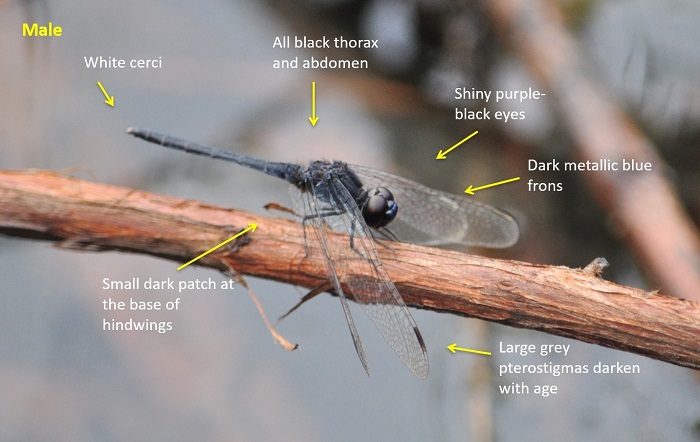
Near Hluhluwe, KwaZulu-Natal
Photo by Ryan Tippett
Small size
Length up to 32mm; Wingspan reaches 54mm.
In South Africa, the Black Percher is only likely to be confused with the rare Diplacodes pumila (Dwarf Percher). Mature males of the two are very similar, being an overall black colour with blackish eyes and a dark metallic blue frons. The Black Percher is the larger species with little to no size overlap between them. Additionally, mature male Black Perchers have white cerci and small dark amber patches at the base of the hindwings. These are largely absent in the Dwarf Percher.
Immature males of D. lefebvrii and D. pumila are easily told apart. The upper thorax of D. lefebvrii is yellowish with fine black etching. The upper thorax of D. pumila is rusty red-brown and diagnostic. The abdomen pattern of the two also differs. D. pumila has a broad black line that extends all the way down the top of the abdomen. In D. lefebvrii this line is noticeably thinner. Traces of the immature abdomen pattern may persist into maturity (see the photo above).
Black Percher females are identifiable by their yellow and black abdomen pattern and grey pterostigmas.
Click here for more details on identification.

Kuleni Game Park, KwaZulu-Natal
Photo by Ryan Tippett
Habitat
The Black Percher inhabits a variety of still-water habitats, especially floodplains and marshes with well-vegetated pools. It also occurs at grass and sedge-lined pans, lakes, and dams. The Black Percher can sometimes also be found at the marshy fringes of rivers and streams. In arid areas, it can sometimes be found at seasonally flooded grassy pans.
The Black Percher occurs at a wide range of altitudes up to 1800m above sea level.

Photo by Ryan Tippett
Behaviour
Male Black Perchers tend to sit conspicuously at the tips of reeds and sedges over the water. The flight is fast and darting and they quickly return to a perch. Females can be found in the same areas as the males but they are more common further from the water among trees and bushes. Their behaviour is similar to that of other Diplacodes species.
The Black Percher is on the wing throughout the year in warmer areas but is less numerous in winter. In cooler regions, the Black Percher flies mainly from November to May.
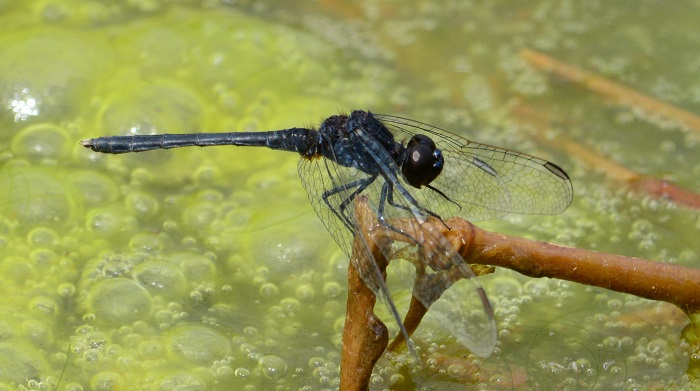
Status and Conservation
The Black Percher is a common and widespread species. It is listed as of Least Concern in the IUCN Red List of Threatened Species. It is adaptable and fairly resistant to habitat degradation. The Black Percher occurs commonly in well-vegetated man-made habitats.

Near Hluhluwe, KwaZulu-Natal
Photo by Ryan Tippett
Distribution
The Black Percher is widespread throughout much of Africa including parts of North Africa, from Egypt across to Morocco. Diplacodes lefebvrii also occurs in parts of Southern Europe and the Middle East.
The Black Percher occurs over most of South Africa but is less numerous in the arid Karoo and Kalahari regions. The Black Percher appears most common in north-eastern KwaZulu-Natal.
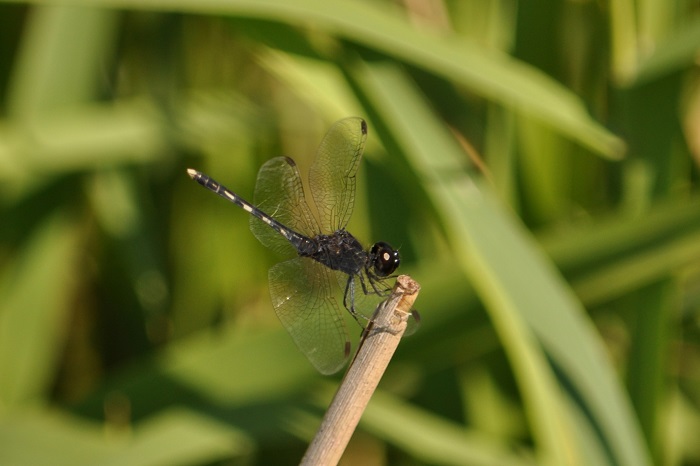
Kosi Bay, iSimangaliso Wetland Park, KwaZulu-Natal
Photo by Ryan Tippett
Below is a map showing the distribution of records for Black Percher in the OdonataMAP database as at February 2020.
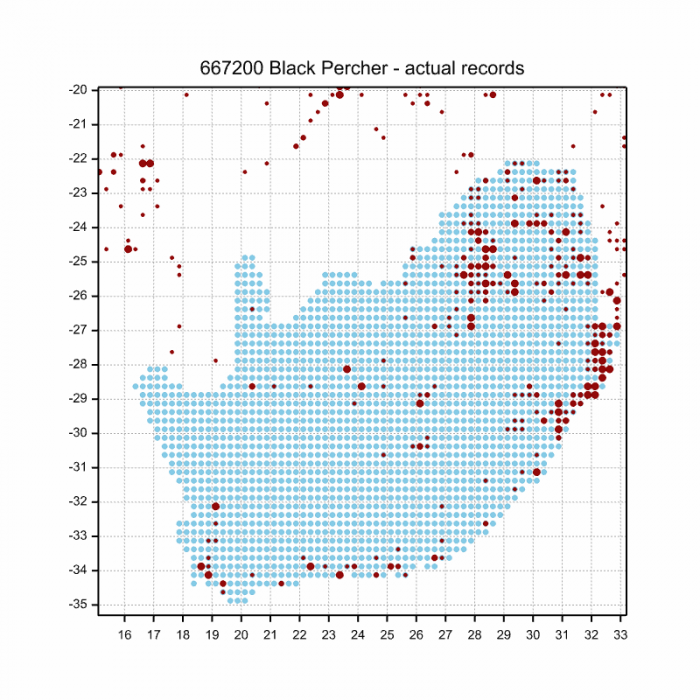
Below is a map showing the distribution of records for Black Percher in the OdonataMAP database as of December 2024.
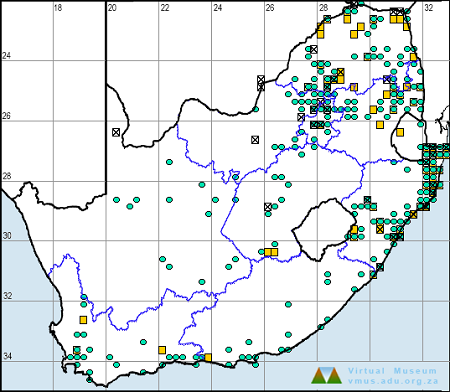
The next map below is an imputed map, produced by an interpolation algorithm, which attempts to generate a full distribution map from the partial information in the map above. This map will be improved by the submission of records to the OdonataMAP section of the Virtual Museum.
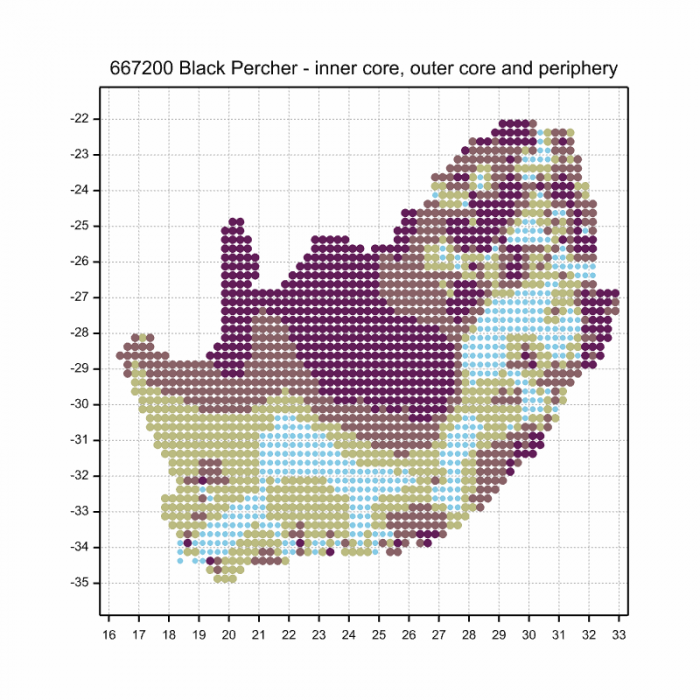
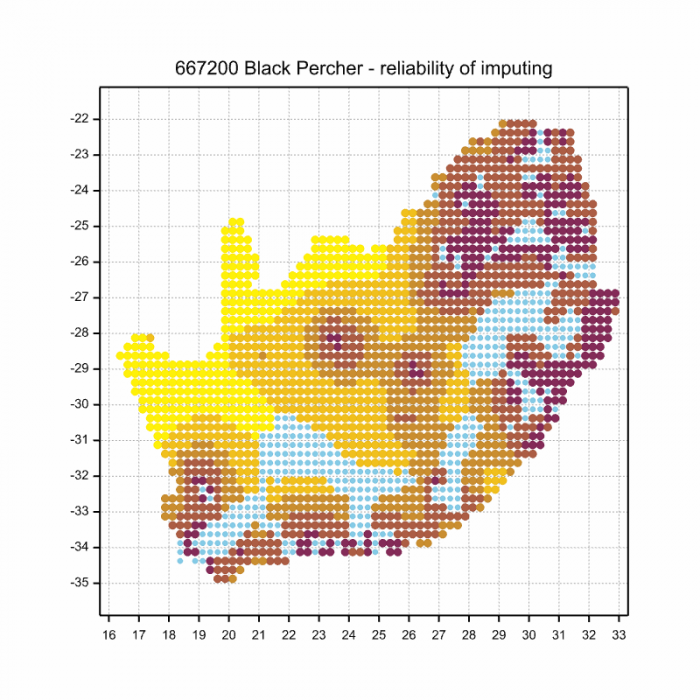
Ultimately, we will produce a series of maps for all the odonata species in the region. The current algorithm is a new algorithm. The objective is mainly to produce “smoothed” maps that could go into a field guide for odonata. This basic version of the algorithm (as mapped above) does not make use of “explanatory variables” (e.g. altitude, terrain roughness, presence of freshwater — we will be producing maps that take these variables into account soon). Currently, it only makes use of the OdonataMAP records for the species being mapped, as well as all the other records of all other species. The basic maps are “optimistic” and will generally show ranges to be larger than what they probably are.
These maps use the data in the OdonataMAP section of the Virtual Museum, and also the database assembled by the previous JRS funded project, which was led by Professor Michael Samways and Dr KD Dijkstra.

Near Hluhluwe, KwaZulu-Natal
Photo by Ryan Tippett
Further Resources
The use of photographs by Richard Johnstone is acknowledged. All other photographs by Ryan Tippett.
Black Percher Diplacodes lefebvrii (Rambur, 1842)
Other common names: Swartsittertjie (Afrikaans)
Recommended citation format: Loftie-Eaton M; Navarro R; Tippett RM; Underhill L. 2025. Black Percher Diplacodes lefebvrii. Biodiversity and Development Institute. Available online at https://thebdi.org/2020/06/17/black-percher-diplacodes-lefebvrii/
References: Tarboton, M; Tarboton, W. (2019). A Guide to the Dragonflies & Damselflies of South Africa. Struik Nature.
Samways, MJ. (2008). Dragonflies and Damselflies of South Africa. Pensoft
Samways, MJ. (2016). Manual of Freshwater Assessment for South Africa: Dragonfly Biotic Index. Suricata 2. South African National Biodiversity Institute, Pretoria
Martens, A; Suhling, F. (2007). Dragonflies and Damselflies of Namibia. Gamsberg Macmillan.
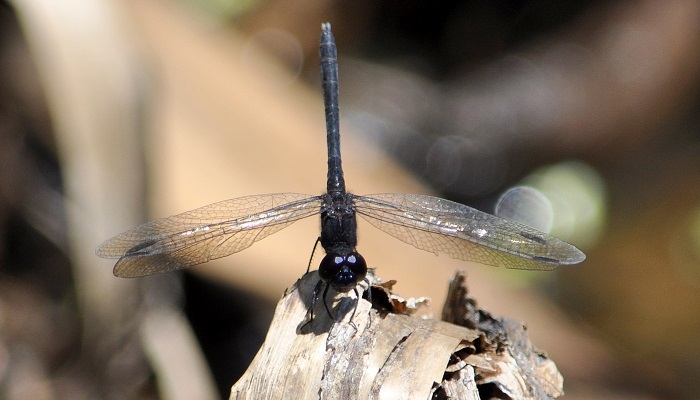
Near Hluhluwe, KwaZulu-Natal
Photo by Ryan Tippett

